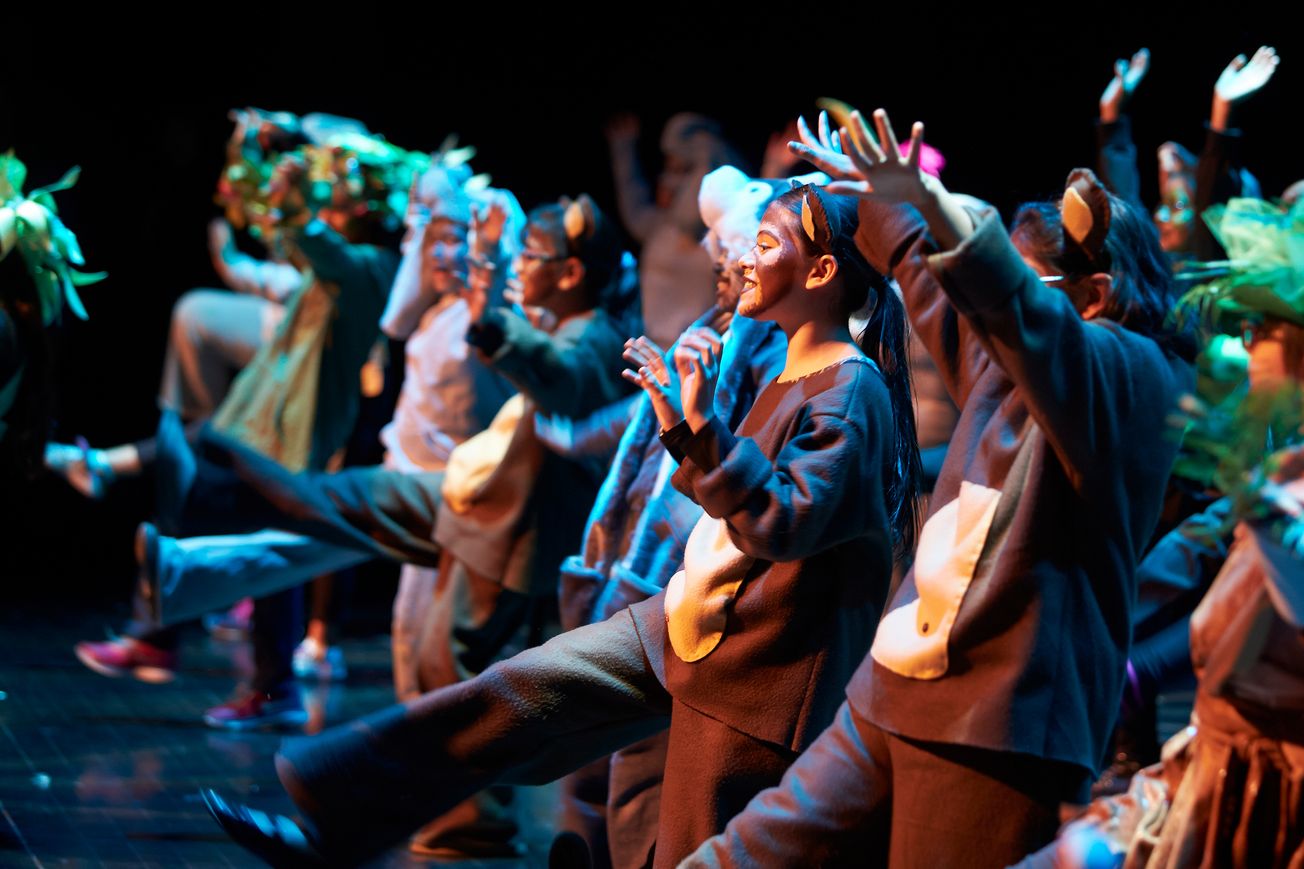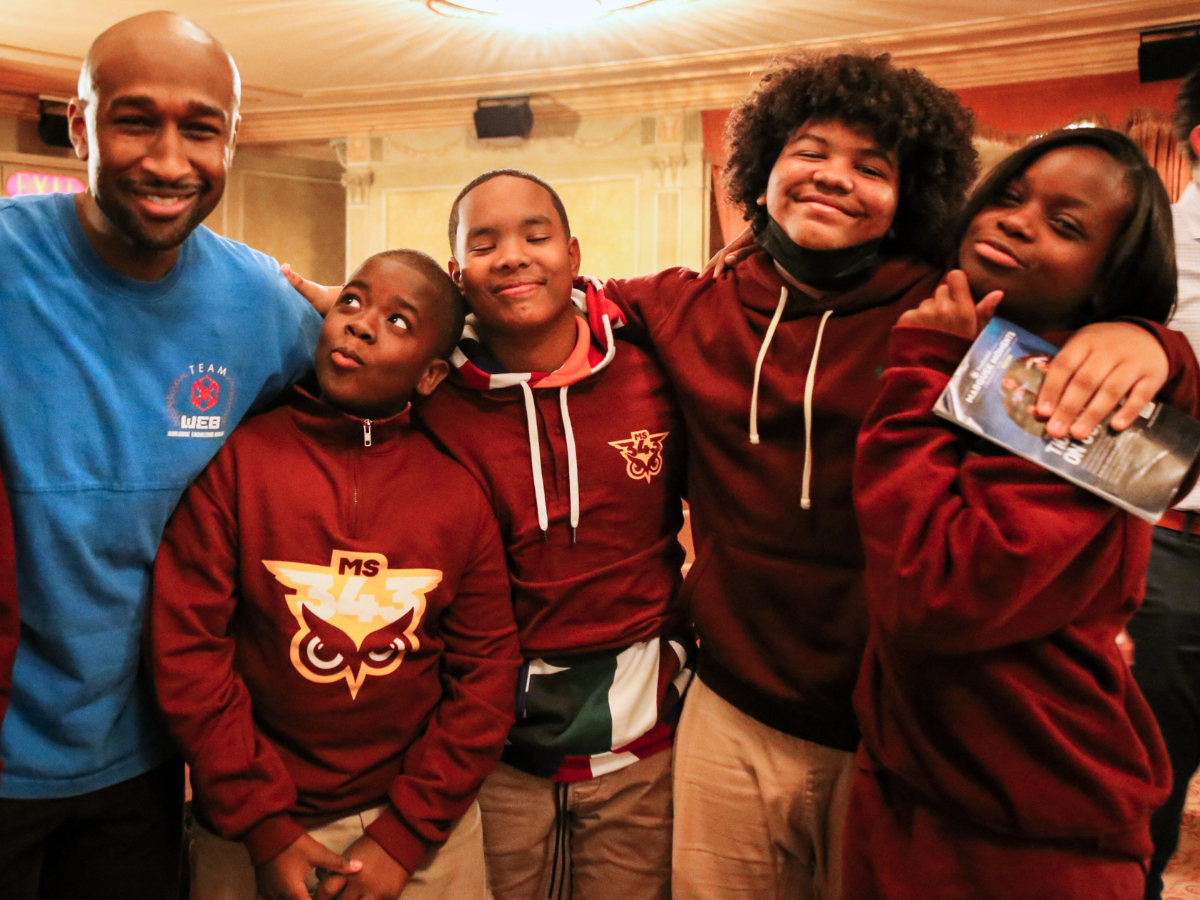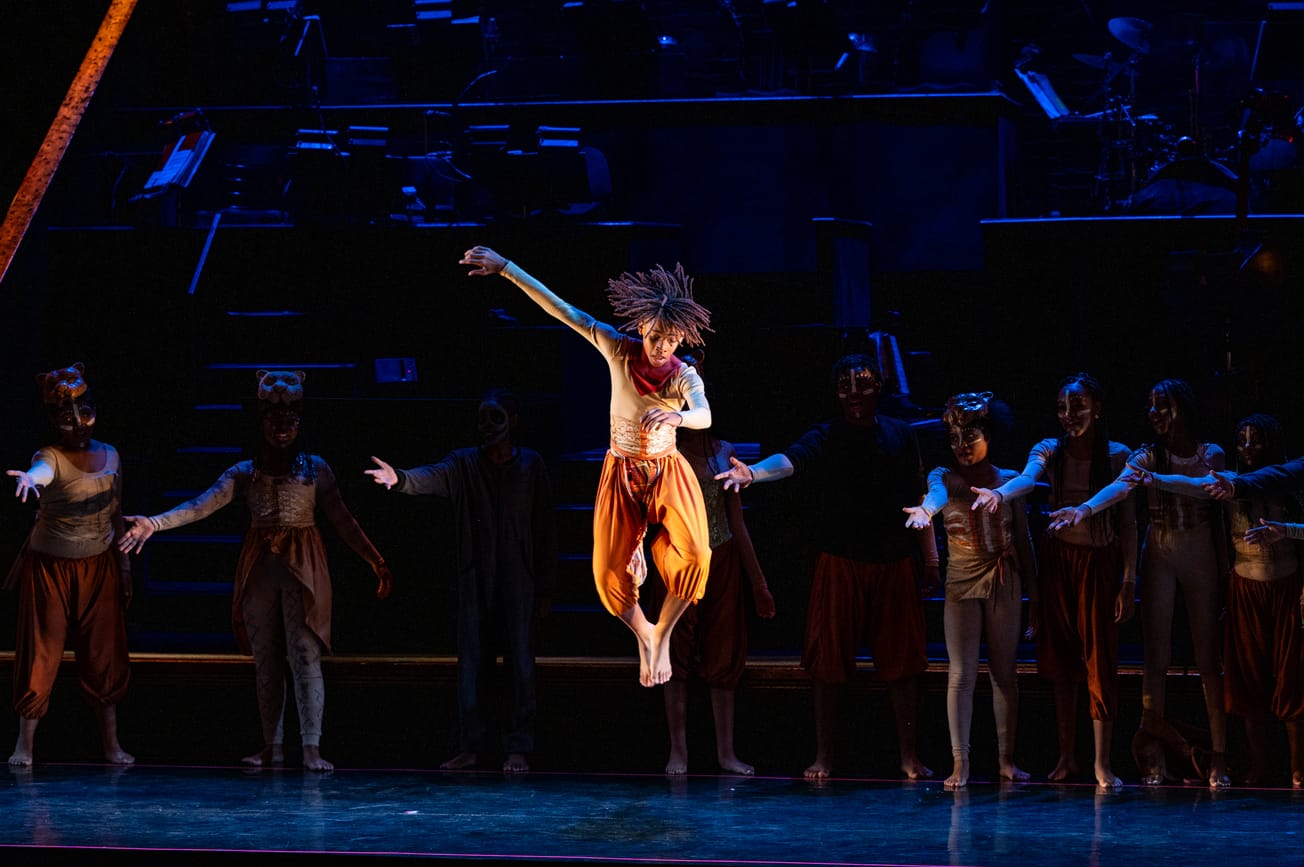Samara Berger: Can you provide a quick overview of the programs that Disney Musicals in Schools offers to young students across the country? How did you get into this work?
Lisa Mitchell: Disney Musicals in Schools is an initiative that creates sustainable musical theater programs in under-resourced elementary schools across the US and UK. We send teaching artists to schools to partner with students and classroom teachers to produce a school’s first musical. Our goal is to give teachers the foundational skills necessary to continue a tradition of theater productions for years to come.
We developed the program after we looked at our licensing business and noticed that there were concerning disparities between which schools produced shows and which didn’t. Ultimately, our goal is to help close the arts education access gap, one school musical at a time.
Samara Berger: Well, we are in total awe of all the good work you're doing with Disney Musicals in Schools. The tears of joy were flowing when I had the opportunity to see their end-of-year performances this Spring. For Situation Project, we aim to support student growth and development, and we recognize that even in the smallest of ways, every individual student we're able to engage in our programming is a stride at addressing that gap, and has an impact on their creative journey.
Speaking of impact, could you share a memorable story that encapsulates the meaningful work you do in arts education?
Lisa Mitchell: The work you’re doing at the Situation Project is so important. It was amazing being in the theater with a house full of students watching SIX. The energy was electric! That’s the stuff of core memories—who knows how many sparks were lit that day.
For me, It’s the moments in which people own this work that thrill me the most. I remember getting a call from our Nashville partners years ago. One of the schools they had worked with the previous year decided to keep going and announced auditions for that year’s production. Every single child in the school showed up to audition. Every. Single. Kid. In Las Vegas, kids in the program were attending middle school information sessions and asking if any of the schools offered theater programs. The middle schools, in turn, started creating drama clubs to respond to the demands of the kids. That’s a very powerful thing!
This sense of ownership extends to teachers, too. A gym teacher signed on to the team in one of our NYC schools. He ended up choreographing the show. The next year, he moved to a new school and took on a leadership role. When he emailed us to ask about bringing the program to his new school, his email signature said “Assistant Principal & Choreographer” and ended with a Martha Graham quote!
Samara Berger: Every part of this story reminds me why we do the work we do! That kind of impact is felt at every level.
Okay, next question. Beyond honing their artistic skills, what broader life lessons and skills have you seen students get from programs like yours?
Lisa Mitchell: So many! And I love knowing your focus at the Situation Project is about development and growth, because theater is such a powerful tool in that regard. Musical theater is the most syncretic art form out there. Music, movement, acting, design—it all comes together in this genre. So kids are truly able to find their thing when producing a musical. It’s a very efficient model for arts education.
But beyond artistic development, musical theater is a phenomenal opportunity for personal development. In order to put on a show, kids need to collaborate, communicate, and take healthy risks. Performing requires tremendous vulnerability, and therefore builds confidence. And theater is an empathy machine—it’s impossible to put on a show without walking a mile in someone else’s shoes.
Samara Berger: I completely agree. The opportunity to work with a cast, on a team, in a company teaches such critical skills for personal development. Learning to care about your castmates as people helps students practice empathy, compassion, and commitment. Things that will support their success and journey towards achieving their personal goals.
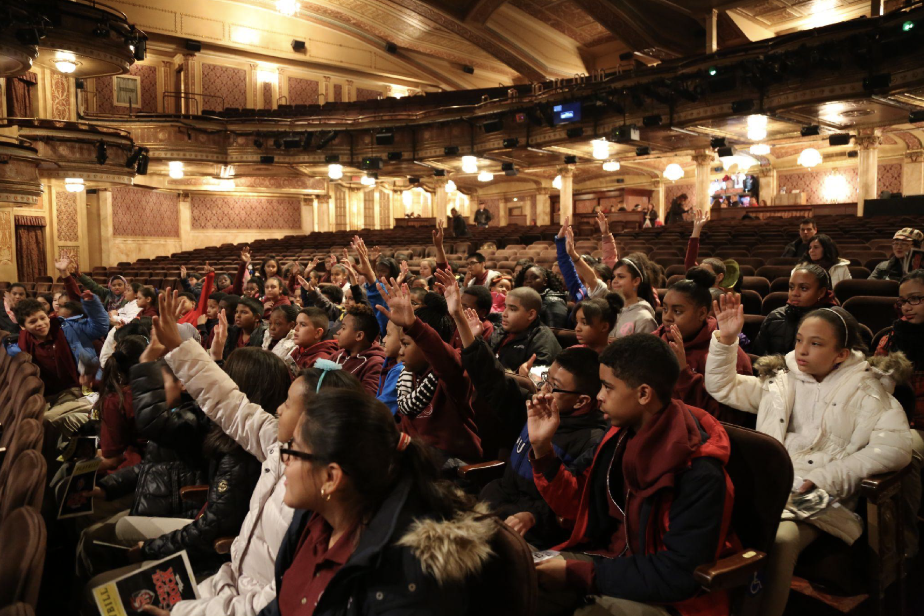
Those skills are taught to such a diverse range of students. How do you ensure that your programs are inclusive and accessible to young people from various backgrounds and communities?
Lisa Mitchell: It’s central to the mission of my department that we are leveraging our stories and brand to engage a diversity of communities. From a programming perspective, we’re mindful of selecting recipients for the Disney Musicals in Schools program who would otherwise not have access to after-school musical theater opportunities. It’s a grant-based program, and we have specific eligibility criteria to ensure our partner schools are serving communities typically under-represented in professional musical theater.
Disney Theatrical Group also offers a range of initiatives designed to improve the inclusivity and accessibility of Broadway, like our sensory-friendly performances and ticketing programs to make our shows more affordable for public schools.
Samara Berger: Yes, it is so important to create a space for ALL little humans, where they are allowed—and encouraged!—to embrace and celebrate all parts of their identities and characteristics that make them so special.
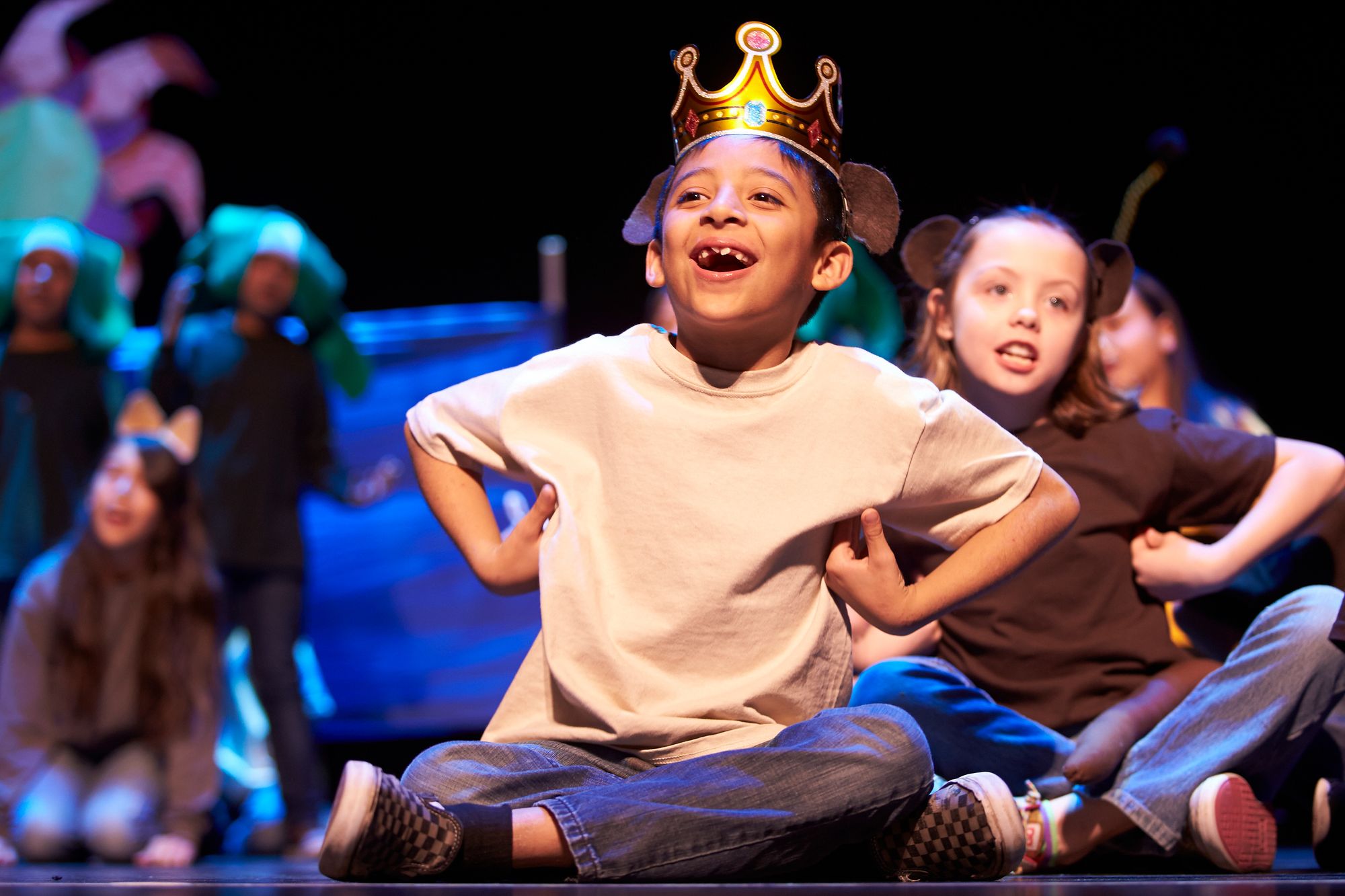
Now, I know there are many different ways you all keep these students engaged. In a rapidly evolving digital landscape, how has Disney Musicals in Schools leveraged technology to engage young audiences and provide them with unique artistic experiences?
Lisa Mitchell: Just before the pandemic, we finalized a new online platform designed to bring Disney Musicals in Schools to communities that might not have access to a professional performing arts center. StageConnect is our online tool to bring quality musical theater programs to kids everywhere. Essentially, it is a comprehensive professional development course for teachers, packed with demonstration videos, instructional videos, templates, and more. Geography should not be a barrier to access and we’re piloting the platform now. I’m eager to roll it out nationally.
Samara Berger: What a gift to students and educators everywhere! Anything we can do to lend superheroes some support, we're there.
Could you shed light on some of the other strategies employed to make arts education accessible to students in underserved communities?
Lisa Mitchell: Arts education is interesting because there are so many strategies involved in its implementation. Whether through programs like Disney Musicals in Schools that teach the craft of theater, organizations like the Situation Project that bring students to the professional theater, classroom teachers who use theater to explore other subjects, or certified theater educators who teach a sequential curriculum, this work can truly be integrated into the K-12 experience. And when all of those stakeholders work together for the benefit of kids, that’s when real change happens.
But I would say the most important component of our strategy is the belief that this work is essential, that everyone deserves access to quality arts education, and all people (teachers and students alike) have the potential to become artists. With that underlying assumption, we can do so much. Over the years, we’ve developed a network of Disney Musicals in Schools collaborators: performing arts centers, regional theaters, teaching artists, teachers, kids, and parents.
By developing authentic feedback loops, the program has endured teacher turnover, tricky education policies, and even a pandemic.
Samara Berger: Yes, Lisa! We often forget the importance of being curious and creative as adults, and kids remind us how easy it can be when we're intentional.
Storytelling is at the heart of theater. How does Disney (and arts education overall) emphasize the importance of storytelling as a means of connecting with students and conveying meaningful messages?
Lisa Mitchell: We regularly tell our teachers and students that you only need three simple ingredients for theater making: a story to tell, people to tell it, and an audience to take it in. One of the most beautiful things about the live art form of theater is that it is context-dependent. Two schools can produce the same script and score, but the story can hit differently in different communities. It’s much more meaningful to see a parent’s original costume ideas than it is to see a replica from a Broadway show or film.

To sit in a cafe-gym-atorium and find new meaning in Aladdin or The Lion King… honestly, it’s one of the best parts of my job.
Samara Berger: I think you've shared the secret ingredient across all arts education mediums: storytelling! We remind our students regularly that their stories hold their superpowers, which are endless. Sharing those superpowered stories brings our communities together, creates shared investment in arts education, and overall, helps to improve long-term student outcomes.
We're so grateful to be on this journey with folks like you, and Disney Musicals in Schools. Thanks for taking the time to chat!
Organizations like Disney Musicals in Schools and Situation Project work tirelessly to close the arts education gap, especially for our most under-resourced and underrepresented students. If you're interested in supporting the programs of either organization please visit situationproject.org or disneymusicalsinschools.com.


